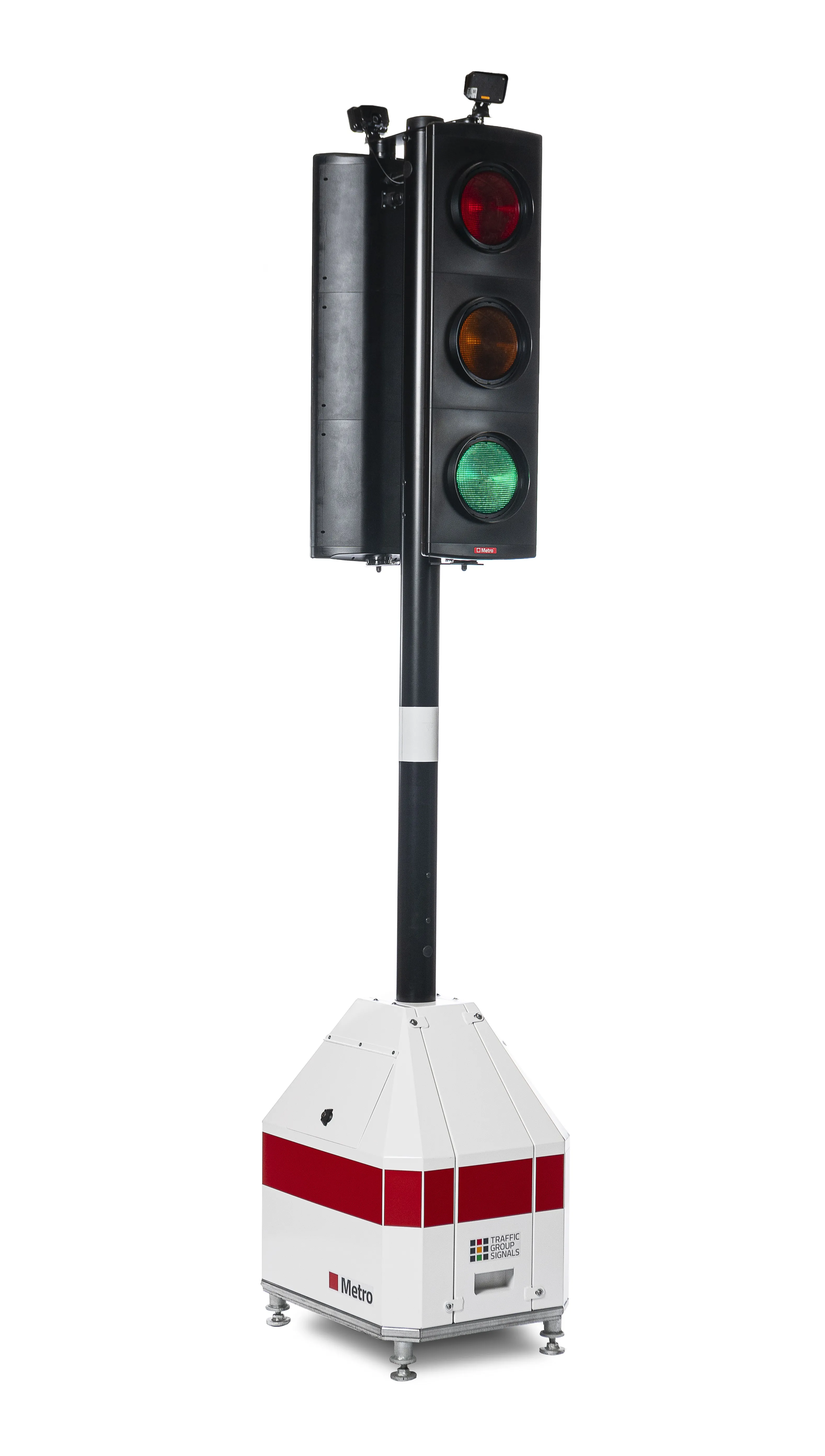
Traffic Group Signals has launched a wireless temporary traffic light product called Metro Haul Route Crossing System.
It says Metro Haul is the only wireless, temporary traffic signal range that complies with UK haul route permit conditions. The system has been designed to combat safety issues arising from the high-speed nature of the roads affected.
As with temporary roads, haul routes are difficult to plan for with many issues that require careful consideration. With a wide range of vehicles, materials and people using them on a daily basis during construction projects, crossings that involve busy arterial roads are a particular area of safety concern.
With the use of manual signals at haul route crossings reducing, there is an increasing reliance on temporary traffic signals. One of the obstacles with this type of signalling is that they are not normally designed specifically for haul routes. Standard portable traffic signals are about 2.3m and are not permitted under the UK’s Type Approval regime due to limited visibility with construction vehicles.
At 3.4m high, the signals of the Metro Haul Route Crossing System include a high visibility, immoveable base unit and full height signal pole with reflective band and support for up to three signal heads. The technology provides contractors with the safest crossing solution for the haul routes on their construction site.
“Our unique system is battery powered and uses the latest radio communications so it can be deployed quickly and decommissioned without any complex infrastructure,” says Will Credicott, marketing manager at Traffic Group Signals. “Because the system is completely cable-free, its installation and subsequent removal at the end of the job minimises disruption to road users compared with traditional methods.”
The temporary signal LED traffic employs a full-sized LED traffic signal head fitted with the high-tech AGD306 radar and/or the LED pedestrian signal with a low-power AGD WAIT indicator and optional Radix tactile indicator. The system can accommodate multiple signal head configurations and it is easy to make precise adjustments to enhance visibility.
The Metro can be programmed for nine vehicle phases and eight pedestrian crossings and can also combine with up to 34 Metro traffic signals to form a complete, temporary traffic control system.
Other features - specific to the requirements of haul routes – include a dedicated crossing mode and a hold-off period that limits how often the crossing will be serviced. This enables the needs of haul route traffic to be balanced against those of the public highway. Meanwhile, the signals will rest at green on the public highway when there few vehicles, so minimising traffic disruption on busy arterial routes.
The system also has time-of-arrival technology that identifies fast-approaching vehicles and avoids signalling vehicles in the ‘dilemma zone’ to red.
Remote management means the crossing is monitored at all times by TMdesk. Remote activation and part-time operation is also possible with TMdesk Pro. This allows highways authorities and main
contractors to work together on the site and produce an audit trail. The Signal Studio enables contractors to design their haul route crossings and locate signals onto a site map or TM plan and simulate them on a PC. Once a scheme has been tested and approved, the scheme tool produces a deployment Data Pack, which includes all necessary information to prepare and commission the signal configuration.
Traffic Group Signals offers a range of portable and temporary traffic signal products, which can be used from 2-way works up to complex, wireless UTC-integrated junction schemes. The company says that its AutoGreen Technology is the only system proven to improve efficiency at roadworks by more than 50% compared with traditional signals and the only system capable of preventing the shuttle lane from becoming blocked.










